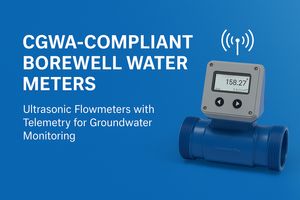2025-01-10
•

Bengaluru is - or rather was – known for its lakes. The only river that runs through the city is currently a polluted sewage drain. The city was fed by the man-made pristine lakes created to sustain agricultural, industrial and drinking needs of the capital. However, of the 265 lakes reported in the 1960s, less than 100 remain now. They have been encroached to a point of no return, causing major environmental impacts in the area.
Of the less than 100 current lakes, most of them are highly polluted to an extent where it cannot sustain aquatic life, much less being used as a drinking water source. Karnataka State Pollution board routinely monitors and reports the temperature, dissolved oxygen, pH, conductivity, biological oxygen demand, nitrates and nitrites, faecal coliform and total coliform of the Bengaluru lakes. <4mg/L dissolved oxygen cannot sustain aquatic life, and >7mg/L is needed for most aquatic life to survive. From the latest data as given in November 2024, it can be seen that the health of Bengaluru lakes is precarious.
Humans can accelerate the death of a lake. Bengaluru’s lakes are rainwater-fed, and then can go from a thriving lake where people can swim and fish to a dead pool of stagnant water in a decade because of the untreated sewage flowing into it.
The pollution of lakes is classified into two according to their sources - point source pollution and nonpoint source pollution. Point source pollution is contamination that originates from identifiable and specific sources. Sewage treatment discharges, untreated sewage, industrial discharges, sewage treatment plants, and other factories and such that release pollutants directly into a lake cause point source pollution. Determining and preventing these are easier compared to nonpoint source pollution.
Nonpoint source pollution comes from various sources, such as agricultural runoff, precipitation, drainage, or seepage. When rain or melted snow moves over and through the ground, the water absorbs and assimilates any pollutants it encounters, like pesticides, fertilizers, sediment, and oil, and deposits them into a stream which eventually deposits them into a lake. There are numerous pollutants in the runoff, so it is difficult to point to a single origin and more complex to manage non-point sources.
Nonpoint source pollution is a type of pollution that comes from many sources and is not from a single outlet. Rain or snowmelt can move the pollutants in its way and deposit them into the lakes. Similar is the case with agricultural land runoff, with high amounts of pesticides and fertilizers ending up in water sources like lakes. Polluted water often contains pathogens that cause waterborne illnesses, causing health issues further down the food chain.
We have seen reports of fish deaths in many of India’s lakes. Agricultural runoff causes nutrient pollution whereby too many nutrients, mainly nitrogen and phosphorus, are added to bodies of water and act like fertilizer, causing excessive growth of algae. The algae use up the oxygen for photosynthesis, reducing the dissolved oxygen in the water body. The fish and other aquatic life cannot survive when the dissolved oxygen goes low. A mass fish death can further contaminate the lake, and lack of sunlight due to algae blooms also affects the aquatic life.
Along with dissolved oxygen, pH and turbidity also effects lake’s health. Pollutants containing salts or acids and suspended particles can change the pH and turbidity vales. The pH is a measure of how acidic or alkaline the water is. Fish cannot survive in highly acidic or highly alkaline water.
Turbidity is a measure of the amount of suspended particles in the water. Suspended particles diffuse sunlight and absorb heat. These causes include increased temperature of the water body and reduced light available for. It can also create a foul odor in the water due to sediment deposits.
It has been seen that pollution almost doubles the economic and environmental impact due to water scarcity in an area. The world’s freshwater resources are rare, and when a lake gets polluted, this water source is cut off.

2025-05-05

2025-04-21